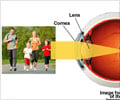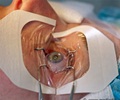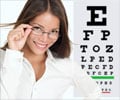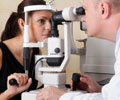- Nirmalan PK, Krishnaiah S, Shamanna BR, Rao GN, Thomas R.. A population-based assessment of presbyopia in the state of Andhra Pradesh, south India: the Andhra Pradesh Eye Disease Study. Invest Ophthalmol Vis Sci. 2006 Jun;47(6):2324-8.
- Charman WN. Developments in the correction of presbyopia II: surgical approaches. Ophthalmic Physiol Opt. 2014 Jul;34(4):397-426.
- Charman WN. Developments in the correction of presbyopia I: spectacle and contact lenses. Ophthalmic Physiol Opt. 2014 Jan;34(1):8-29.
- Elliot DB, John J, Scally AJ, Foster R, Buckley JG. Intermediate addition multifocals provide safe stair ambulation with adequate short term reading. Ophthalmic & physiologic optics. 2016;36:60-68.
- Care of the Patient with Presbyopia - (https://www.aoa.org/documents/optometrists/CPG-17.pdf)
What is Presbyopia?
Presbyopia is a physiological visual condition occurring in middle-aged individuals wherein there is an inability to focus on near objects.
Why does Presbyopia occur?
Presbyopia occurs as a result of age-related weakness of accommodation. Accommodation is the process by which the eye adapts in order to obtain a clear image of near objects (less than 6 meter distance). When a person focuses on a near object, the ciliary muscle of the eye contracts, resulting in a change in shape of the crystalline lens so that light from the object focuses on the retina instead of behind it. At greater distances, accommodation is not required as light from distant objects focuses on retina anyway (in people who don’t have refractive errors). Thus, the process of accommodation ensures that a person has clear vision at all distances.
In persons above the age of 40 years, the crystalline lens becomes less flexible; thus its ability to change its shape is reduced. This rigidity of the lens increases progressively; thus, the degree of presbyopia gradually increases until the age of 60 years, when there is a total loss of accommodation.
What are the Signs and Symptoms of Presbyopia?
Presbyopia usually starts around the age of 40 years. However, many individuals develop symptoms even in their 30s, especially in India. People notice an increasing difficulty in performing near visual tasks, especially in the evenings and at night (periods of dim illumination). They also notice that they are able to read or write if the material is kept at a distance farther from the eye than to what they are accustomed. Attempts to perform near visual tasks at normal distances lead to eye strain and headaches. Initially the difficulty is only for objects at reading distance, but as age advances, difficulty is experienced even for tasks at intermediate distance, that is, computer work, reading labels on store shelves, cooking, as well as for barbers, beauticians, and tailors. Many people gradually avoid near tasks and for professionals, work productivity can suffer.
Persons who have myopia (short sightedness) notice that they experience the above symptoms while wearing their glasses, but are extremely comfortable with near tasks after removing their glasses. On the other hand, persons with hypermetropia (long sightedness) have an earlier onset of presbyopic symptoms compared to others with no refractive errors.

How do you Diagnose Presbyopia?
Presbyopia is diagnosed by a simple eye examination that involves testing of vision with an eye chart and refraction. In addition, a basic routine complete eye examination with a slit lamp, and examination of the retina after dilating the eyes is performed.
When do you get Premature Presbyopia?
Presbyopia occurring at a much earlier age than expected is termed premature presbyopia. Causes include uncorrected hypermetropia, malnutrition, trauma, excessive near vision demands, diabetes, multiple sclerosis, cardiovascular diseases, myasthenia gravis, anemia, alcohol intake, surgical removal of the crystalline lens, and the intake of drugs such as antidepressants, antihistamines and diuretics.
How do you Correct Presbyopia?
There are various ways to correct presbyopia. The most common and the most popular is by the usage of spectacles. While using spectacles, it must be remembered that the same power cannot be used for both far and near vision. A person who has presbyopia and who has no refractive error requires a plus power lens only for near vision. He can see well at a distance without any power. A person with myopia (short sightedness) needs a minus power lens for distance, and a different power for near. A hypermetrope (a person with hypermetropia or what is commonly referred to as far sightedness) requires a plus power for distance, and an additional plus power for near. In other words, the near correction is the algebraic sum of the distance correction and the additional plus power for near. In the early stages of presbyopia, people can see objects at intermediate distance with the distance correction; however, as age advances, they require a correction for intermediate distance which is slightly less than that of the reading power.

Spectacles for the correction of presbyopia can be in many forms –
1. Single vision reading spectacles
The power in the spectacles is for near tasks throughout the entire lens. So while near vision is clear while using the spectacles, the person would have to remove the spectacles for distance vision.
2. Bifocals
Here there is power for distant vision in the top part of the lens and for near vision in the bottom part of the lens (reading segment). The reading segment can either be curved, D shaped or rectangular, and the partition line is visible. Bifocals do no provide clear vision at intermediate distance.
3. Progressives (progressive addition lenses or PALs)
Here there is a gradual continuous change of power from the top portion to the bottom portion. There is no partition line seen on the lens and is thus more cosmetically appealing compared to bifocals. These lenses are suitable for distant, intermediate and near vision use.
4. Adjustable power spectacles
These can either be in the form of liquid-filled lenses (wherein the power can be altered for various distances by means of a screw in the bridge that varies the amount of fluid in the lenses thus altering its power) or electrically-switched lenses (small battery that produce changes in refractive index of a liquid crystal lens with plate electrodes). These lenses have a lot of limitations and hence are not very popular or widely available.
Contact lenses:
For those who do not wish to wear glasses, contact lenses are an option and usually are available in a multifocal design. There are multiple zones for different distances and the patient learns to adapt to be able to see at any given distance. If you find it difficult to adapt to multifocal contact lenses, then you can opt for a single vision contact lens in only one eye. Here, one eye is used for distance and the other for near. This is referred to as monovision.
Orthokeratology:
Here, rigid contact lenses are used overnight in one eye (to make the cornea change its shape), so that in the daytime a person can have good near vision in that eye without spectacles or contact lenses). The contact lenses are used every night in one eye, and in the daytime, the person is lens free. Orthokeratology is used to induce monovision.
Surgical options:
Apart from the above optical methods, there are surgical methods to correct presbyopia for those who do not wish to be dependent on spectacles or contact lenses for reading.
1. Surgical removal of the crystalline lens with implantation of a multifocal intraocular lens
Here the crystalline lens is surgically removed regardless of whether there is a cataract or not, and replaced by an intraocular lens that has multiple zones for clear vision at different distances. Your brain adapts to see clearly at the distance at which you intend.
2. Phakic multifocal intraocular lenses
In younger patients, an intraocular lens is placed over the regular crystalline lens
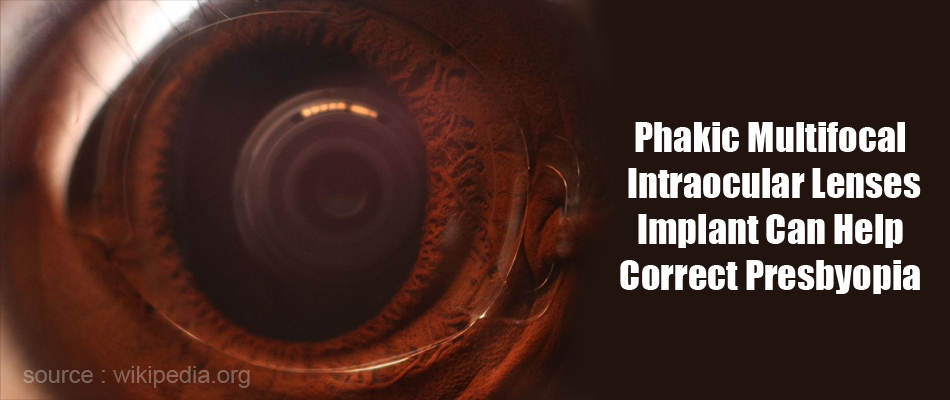
3. Removal of the crystalline lens with implantation of an accommodating intraocular lens - wherein the design of the intraocular lens is such that it moves forward due to the effort of accommodation (contraction of the ciliary muscle) and thus enables vision at near.
4. Presbyopic Lasik
A modification of the Lasik procedure in which differential ablation (removal of tissue) in the cornea is performed to create a multifocal effect, or by monovision, wherein one eye is made myopic to enable near vision.
5. Corneal inlays
A disc made of synthetic material is placed within the corneal stroma of the non-dominant eye to enable this eye to see clearly at near, leaving the other eye for distance vision (monovision). The disc changes the power of the eye by a change in surface curvature and refractive index. The Kamra inlay improves near vision by means of the pin-hole effect. The main advantage of inlays is that the procedure can be reversible.
Ultimately the correction of presbyopia involves a careful consideration of individual requirements, constraints and economic resources. Most people are happy with spectacles or contact lenses or some combination of the two.
How do you Prevent Presbyopia?
Presbyopia cannot be prevented or reversed. It is a natural aging process just like greying of hair. There are many options today for the correction of presbyopia and there is no “one way fits all” method. You have to take into account your lifestyle, work habits and personal requirements and along with your doctor can work out how best to adapt with the available choices.



